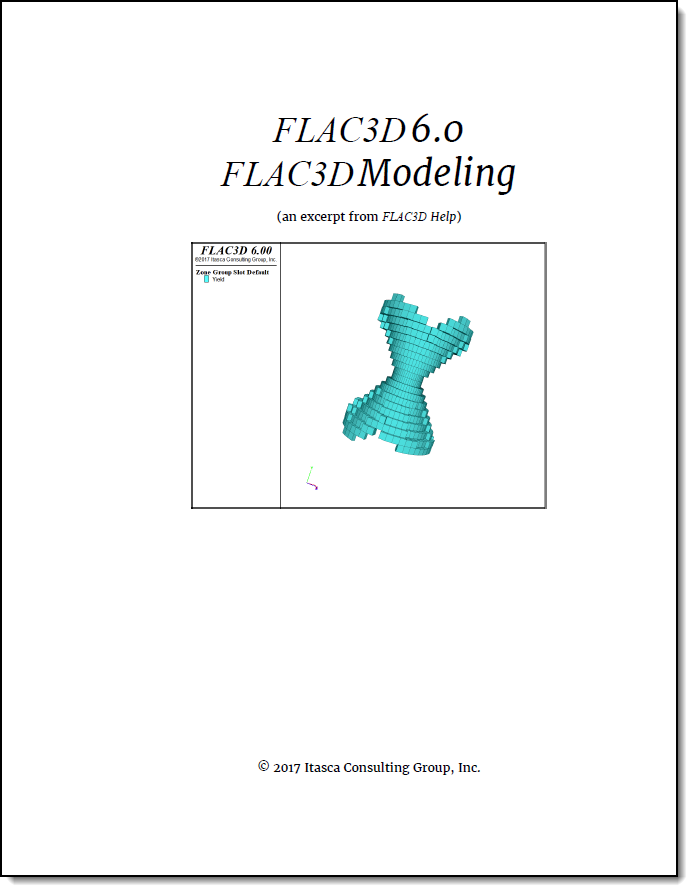


Model objects can belong to multiple groups by assigning groups to slots (akin to CAD layers)Ĭan be assigned interactively using a number of visual ranges.

Assign constitutive and material properties via the Model pane NEW.Assign model objects (zones, gridpoints, faces, structural elements, etc.) to groupsvia the Model pane.Updated for consistency and improved ease-of-use (write) of most model parameters, even while cycling, and has been Using a syntactical pattern of noun-verb-option-modifiers-range.įLAC3D's built-in scripting language, permits access (read) and control Software, more intuitive in construction, and easier to learn and apply Fluid flow, thermal (optional), and attach-logic are multi-threaded to perform much faster NEWĬommands have been reformulated to be more consistent across Itasca.Multi-threaded solutions for mechanical calculations with no CPU locks or additional fees.Extensive solution controls and options.FLAC3D can be extended with options that are offered separately from the base program. While FLAC3D has been developed to be general in nature, it has been designed, in collaboration with our own consultants, with geotechnical and geomechanical applications in mind for civil (tunnels, rail embankments, wharfs, soil enhancement, retaining walls, piles, foundations), mining (ramps and drifts, stopes, blasting, subsidence, caving, sills, pillars, tailings dams), oil & gas (salt caverns, wellbore optimization, borehole breakouts, compaction/subsidence, cap rock integrity), and power generation (dams, power house caverns, wind turbine foundations).
#HISTORIES OF PRINCIPAL STRESSES IN FLAC3D MOVIE#
FLAC3D offers a fully integrated numerical modeling environment that includes model project management capabilities, interactive mesh building and model construction, run-time monitoring of results (including FISH scripting variables and function states), extensive plotting options, and easy, automatic movie pre-processing tools.


 0 kommentar(er)
0 kommentar(er)
